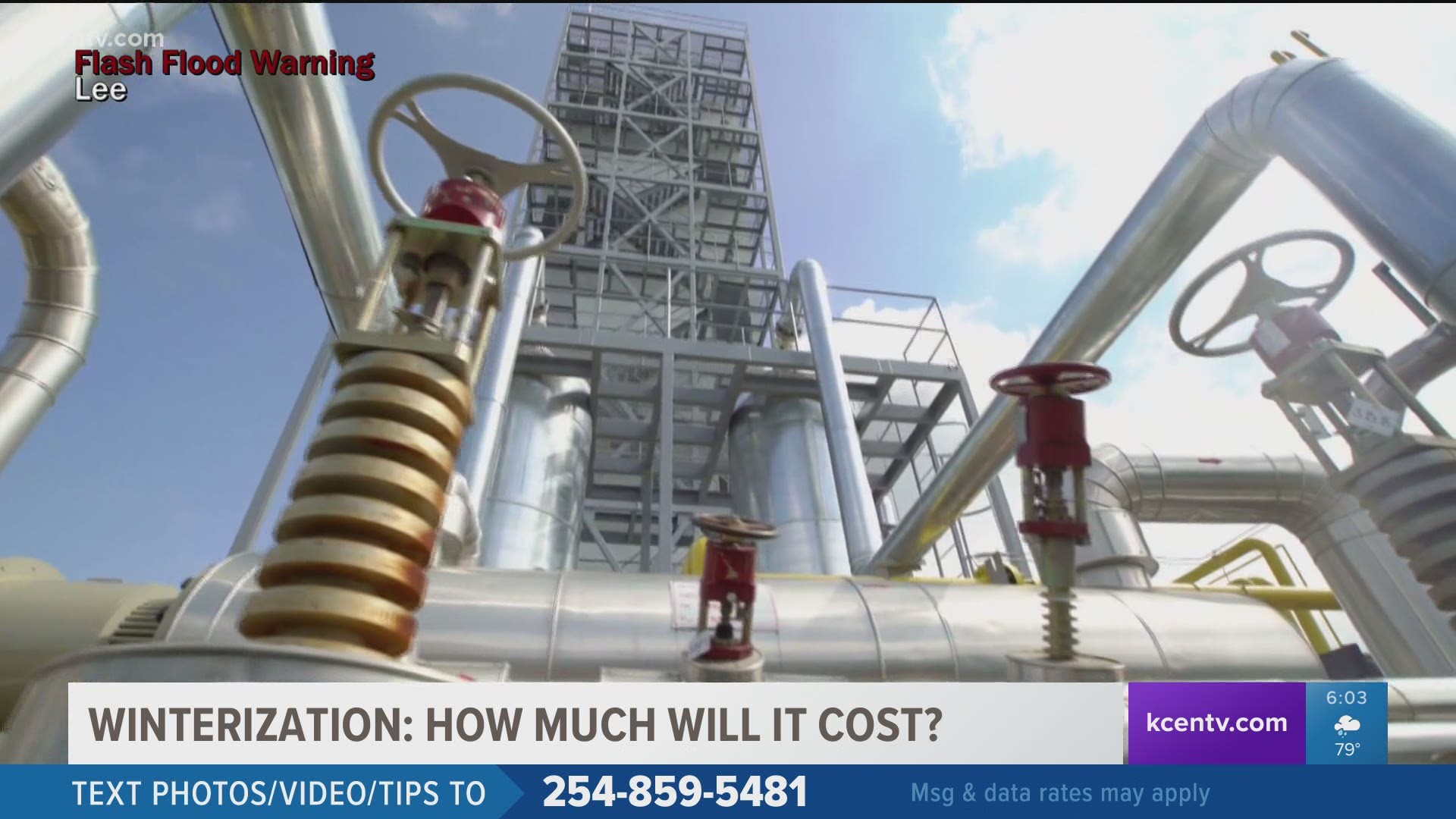TEXAS, USA — Weatherization will not be cheap for Texas energy providers. So when the CEO of Vistra Corporation, Curt Morgan, said weatherization was a critical objective for the legislature this session, it's a good indicator of what's at stake in the state.
"We created a situation where people are worrying about whether they will get electricity or not. That should have never happened. I am committed to tell the truth, to layout the facts of what happened, and to push measures to make sure that this never happens again," Morgan told WFAA.
When asked what item's the legislature had to address to fix the issue, Morgan had a clear answer.
"There is two of them. One is registration of critical infrastructure, the other is weatherization of critical infrastructure," Morgan said.
That weatherization will not be cheap for the state's natural gas energy producers, which account for more than half the energy available to the state. The process must happen at the well heads, processing plants, the pipelines, and the power plants that receive the gas at the end of the line.
Estimates vary, but an analysis provided by economists with the Federal Reserve Bank of Dallas has begun to shed some light on the process. Economist Garrett Golding worked with Anil Kumar and Karel Mertens to analyze the costs in April.
Golding discussed the findings with 6 News on Monday. According to their data, the cost to winterize new and existing wellheads is between $20,000 and $50,000 per well. Companies may balk at the price for existing wellheads, as it could set them back quite a bit.
"It's fairly small to the cost of a new shale well in the Permian Basin for instance, to put these measures into place for older less productive wells may not be economically justified. It would just add up too quickly on too many companies," Golding said. "When you are taking about a $20,000 to $30,000 retrofit on one of these things, it exceeds, in some cases, months of production."
Winterization cost estimates for power plants that use natural gas are even higher at $60,000 to $600,000. The analysis was based on a joint study by the Federal Energy Regulatory Commission (FERC) and North American Electric Reliability Corp. (NERC) from back in 2011. That document showed winterizing equipment for Texas gas plants could cost between $50,000 and $500,000 (in 2011 dollars) per plant. Golding said that would be around $60,000 and $600,000 today.
Their analysis found installing FERC’s/NERC’s recommended equipment on all 162 gas-powered plants in Texas could cost up to $95 million today. At the same time, with the last best study being 10 years old, companies may get a different estimate today.
"We did a lot of asking around on this and it is very difficult for most industry participants to say until they go out and get quotes for this, on top of the fact that every plant will need something different because they were all designed differently and have different architectural features," Golding said.
RELATED: Texas Public Utility Commission rule aimed to lower power costs, but made things worse instead
The Federal Reserve Bank of Dallas team also looked at winterizing Texas’ 13,000 wind turbines. Their report said blades with internal warming equipment can cost $400,000 per unit if installed at the factory. Golding said it would be much more challenging to retrofit those that are already in the field and it was difficult to estimate the cost.
The main takeaway for the team, however, was that the cost of not making these changes may be even higher. The team wanted to compare the cost of improvements to the amount of money providers could have made during the period if they had not gone offline and left people in the dark.
"What we wanted to find out was the value of the electricity that wasn't used during the storm," Golding said. "The value of the electricity that was lost that week."
Golding said the amount of money power providers lost when they failed to provide what the grid needed came to more than $4 billion. That may seem like a lot, but Morgan said their business alone lost an estimated $1.6 billion in the storm.
Golding said the annual cost of weatherizing across 10 years would less than this amount, though it was close. Golding said their conclusion was the cost is worth the benefit of keeping the states lights on.

